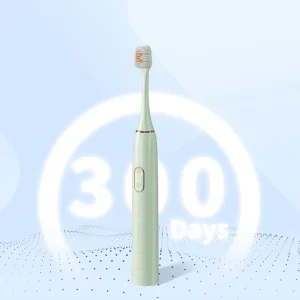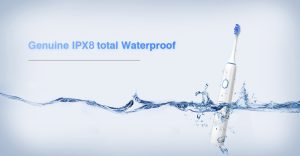With increasing awareness of oral aesthetics, the demand for teeth whitening devices has surged. Manufacturers are continuously innovating to provide more effective and convenient solutions for consumers. However, with multiple options available, how do manufacturers decide which type of whitening device to produce? This article provides a detailed comparison of different types of teeth whitening devices, highlighting whitening device pros and cons to help businesses make informed production decisions.
LED Teeth Whitening Kits
LED teeth whitening kits use a combination of a whitening gel (typically containing peroxide) and LED light to accelerate the whitening process. The light activates the whitening agents, breaking down stains faster. https://www.powsmart.com/product/teeth-whitening-kit-device/
Pros
- Effective for deep stains – Can remove long-term discoloration from coffee, wine, and smoking.
- Non-invasive – No drilling or scraping involved, making it a safe option for most users.
- Popular in the market – High consumer demand due to visible results within a few uses.
Cons
- Requires multiple applications – Not an instant solution; users must apply the treatment over several sessions.
- May cause sensitivity – Some users experience gum irritation or tooth sensitivity due to peroxide content.


Whitening Strips
Whitening strips are coated with a peroxide-based gel and applied directly to the teeth. Over time, the gel penetrates the enamel to lift stains.
Pros
- Affordable and easy to produce – Low manufacturing costs make this an attractive option for large-scale production.
- Convenient for consumers – No need for special devices; users can apply them anywhere.
- Widely available – Sold in pharmacies, supermarkets, and online platforms.
Cons
- Limited effectiveness on deep stains – Best for surface stains rather than intrinsic discoloration
- Uneven whitening – Since the strips may not cover all areas, results can be inconsistent.
Teeth Whitening Pens
Whitening pens contain a gel that users apply directly to their teeth using a brush-tip applicator. These are often used for touch-ups rather than full treatments.
Pros
- Portable and easy to use – Ideal for on-the-go whitening.
- Targeted application – Users can apply gel precisely where needed.
- Lower peroxide concentration – Reduces the risk of sensitivity.
Cons
- Short-term results – Designed for maintenance rather than intensive whitening.
- Small product size – Requires frequent repurchases, leading to higher costs over time.
Professional In-Office Whitening Devices
These high-powered whitening devices are used in dental clinics and involve concentrated peroxide gels activated by laser or UV light.
Pros
- Fastest results – A single session can lighten teeth by multiple shades.
- Long-lasting effects – Results can last for months with proper care.
- High-profit margin for manufacturers – Targeted at professional markets, ensuring premium pricing.
Cons
- Expensive – Costly for both businesses and consumers.
- Requires professional administration – Not suitable for at-home use.
Whitening Toothpaste and Powder
These products contain mild abrasives and low concentrations of peroxide or other whitening agents to gradually remove surface stains.
Pros
- Cost-effective to produce – Simple formulations lead to lower production costs.
- Suitable for daily use – Can be incorporated into a regular oral care routine.
- No sensitivity issues – Gentle on enamel compared to peroxide-based products.
Cons
- Slow results – Takes weeks or months to show noticeable effects.
- Limited whitening power – Cannot remove deep stains or intrinsic discoloration.
Choosing the Right Whitening Device for Manufacturing
When selecting a teeth whitening device for production, manufacturers must consider:
Target market: Are the products for at-home consumers or professional dental clinics?
Production costs: Does the product require expensive technology or simple ingredients?
Consumer trends: Are buyers looking for convenience, affordability, or professional-grade results?
By analyzing the pros and cons of each option, businesses can align their whitening device manufacturing strategies with market demand and profitability.
Conclusion: Innovation in Whitening Device Manufacturing
The teeth whitening industry continues to evolve, with new technologies emerging to meet diverse consumer needs. Whether investing in LED whitening kits, whitening strips, or professional-grade devices, manufacturers must balance effectiveness, cost, and market trends. By understanding different types of whitening devices pros and cons, businesses can position themselves as leaders in this growing industry.
Would you like to explore the latest advancements in whitening device manufacturing? Contact us today to discuss customized solutions for your brand!https://www.powsmart.com/contact-us/


